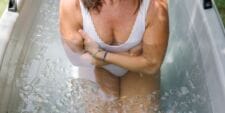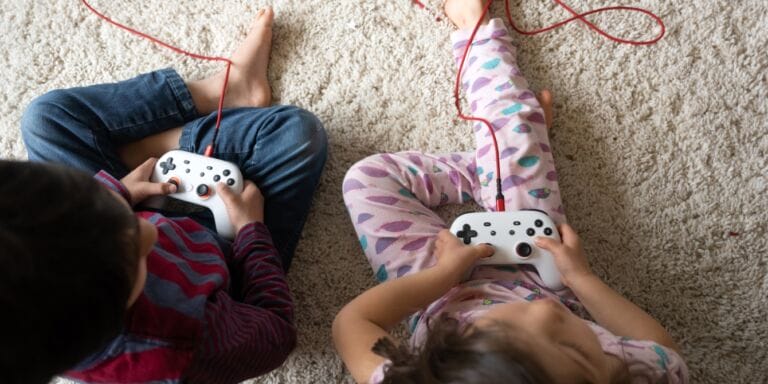Teens need more sleep—and using bright light therapy could help

Syda Productions/Shutterstock
Adolescents need 8 to 10 hours of shut-eye for optimal physical health, emotional wellbeing, and strong academic performance.
Table of Contents
If your teen doesn’t seem to be getting enough sleep, they’re not alone. Teens and sleep don’t exactly mix. Their biology actually changes during puberty, which can shift sleep patterns. But there may be hope if you want them to add some more Zs to their already-packed schedules.
Adolescents need anywhere from eight to 10 hours of shut-eye for optimal physical health, emotional wellbeing and strong academic performance. But most teens get fewer than eight hours—especially on school nights.1Crowley SJ, et al. Extending weeknight sleep of delayed adolescents using weekend morning bright light and evening time management. Sleep, 2022. doi:10.1093/sleep/zsac202.
“There are a lot of changes a teen goes through,” Dr. Stephanie J. Crowley, PhD, associate professor of psychiatry and behavioral sciences and the director of the Pediatric Chronobiology and Sleep Research Program at RUSH, says in a statement. “One specifically is a change to sleep biology that happens during puberty.” (That typically occurs before the teen years.)
“The brain systems that control sleep change in such a way that it’s easier for an adolescent to stay awake later into the evening. One of these systems—the 24-hour circadian clock—shifts later in time,” Crowley says.
This can create a conundrum for parents and kids alike: Teens should be going to bed earlier in order to get to school on time—many of which have early start times—but their biology is shifting so they naturally go to bed later.
Testing teen sleep and circadian patterns
Crowley published new research in “SLEEP”: She tested an intervention on 46 adolescent students between 14 and 17 (24 were females) using bright light therapy on weekends to attempt to find a better nighttime routine during the school week.
Bright light therapy involves exposing yourself to bright light in the morning hours in order to regulate your circadian clock, cueing it to wake up earlier—and help you fall asleep at an earlier hour. People use bright light therapy to aid a host of sleep-related issues, including seasonal affective disorder.
In short, when they shifted teens’ bedtime earlier by an hour and used bright light therapy on Saturdays and Sundays, teens wound up falling asleep 1.5 hours earlier—and sleeping for an extra hour, too.2Crowley SJ, et al. Extending weeknight sleep of delayed adolescents using weekend morning bright light and evening time management. Sleep, 2022. doi:10.1093/sleep/zsac202.
Here’s how the study was designed
All the students slept as usual for two weeks to establish their baseline pattern. The study took place over three weekends with two full school weeks sandwiched in. On weekdays, the intervention group went to bed 1 hour earlier. During the second full week, they went to bed 2 hours earlier. During the second weekend, they were exposed to bright light on weekend mornings (for a combined total of 2.5 hours). Researchers measured the teens’ dim light melatonin onset (that’s when your body naturally starts making melatonin, which aids your circadian clock) for the first and third weekend.
A control group got bright light on the first and third weekends, but not the second. They slept as usual and didn’t have evening management plans.
The most successful intervention seems to be a combination of both better evening time management and using bright light on weekend mornings, both of which helped kids get more sleep during the school week. How’d they get the teens to go to bed earlier? They used time management tools, and dealt with barriers that prevented kids from going to bed earlier—in some cases, limiting after-school activities. (I bet they stopped screen time at night, too.)
Kids need more sleep—maybe light can help
Here’s something interesting: The teens with late circadian clocks (those who naturally stayed up later) shifted wake-up times by up to two hours earlier. The kids with earlier circadian clocks (who naturally went to bed earlier) didn’t have to be shifted any earlier—they just needed to manage their time better at night to increase how long they slept.
Teens in the intervention group were less worried, irritable and tired. They were able to concentrate more. And—hooray for this one—they were more alert in the morning.
Were they able to maintain the routine? The researchers are following participants to see if this newfound addition of sleep sticks around for the long haul.
This isn’t the first study on bright light therapy to help teens get more rest. A combo of talk therapy to urge them to go to sleep earlier along with flashes of light therapy increased the amount of sleep teens got in one study.3Kaplan KA, et al. Effect of Light Flashes vs Sham Therapy During Sleep With Adjunct Cognitive Behavioral Therapy on Sleep Quality Among Adolescents: A Randomized Clinical Trial. JAMA Network Open. 2019. doi:10.1001/jamanetworkopen.2019.11944.
There’s been some talk about starting school later so that teens, specifically, can get more sleep. Some states, such as California, have adopted later school start times, as experts say it may help students perform better in school and be healthier overall, while others argue that they’ll need to learn how to be up early when they are working adults.
Sources
1. & 2. Crowley SJ, et al. Extending weeknight sleep of delayed adolescents using weekend morning bright light and evening time management. Sleep, 2022. doi:10.1093/sleep/zsac202.
3. Kaplan KA, et al. Effect of Light Flashes vs Sham Therapy During Sleep With Adjunct Cognitive Behavioral Therapy on Sleep Quality Among Adolescents: A Randomized Clinical Trial. JAMA Network Open. 2019. doi:10.1001/jamanetworkopen.2019.11944.
Source(s)
- 1Crowley SJ, et al. Extending weeknight sleep of delayed adolescents using weekend morning bright light and evening time management. Sleep, 2022. doi:10.1093/sleep/zsac202.
- 2Crowley SJ, et al. Extending weeknight sleep of delayed adolescents using weekend morning bright light and evening time management. Sleep, 2022. doi:10.1093/sleep/zsac202.
- 3Kaplan KA, et al. Effect of Light Flashes vs Sham Therapy During Sleep With Adjunct Cognitive Behavioral Therapy on Sleep Quality Among Adolescents: A Randomized Clinical Trial. JAMA Network Open. 2019. doi:10.1001/jamanetworkopen.2019.11944.


































